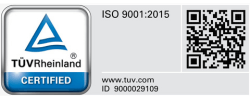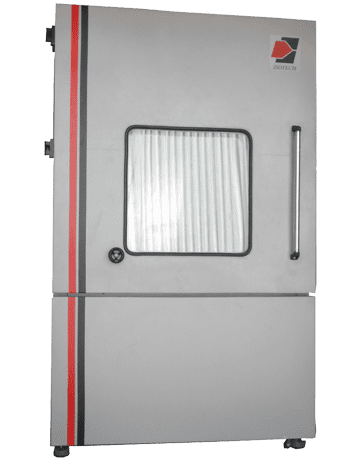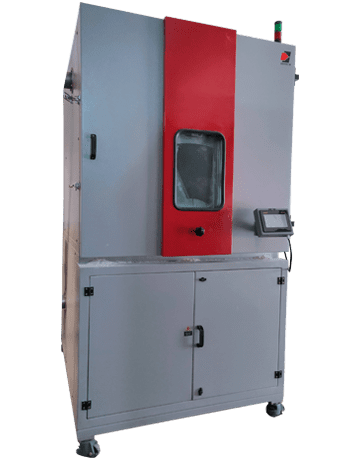
Dust chamber, Temperature, Heating.
Chambers Overview
Introduction Dust Chamber
It is constructed in compliance with MIL, DIN,IEC, JSS 55555, ISO, IS 9000.
Dust chamber is intended for performing different type of test where the temperature of sample environment must be controlled within certain limits. Our policy of continual liaison with leading researchers ensures we maintain our premier position as suppliers of high quality Dust Chamber and associated facilities. Our Dust chamber were designed with Safety, Reliability, Ease of operating and ergonomically.
Main Features
- Test space dimensions are 750 liters to 27000 liters.
- Temperature Range RT + 5° C to +80° C.
- Temperature deviation +/-0.5° C.
- Temperature Resolution 0.1° C.
- Temperature Gradient +/- 1° C to 2° C.
- Temperature Range +20° C Humidity: less than 30% RH non controllable this facilities is available only in ITDTC models.

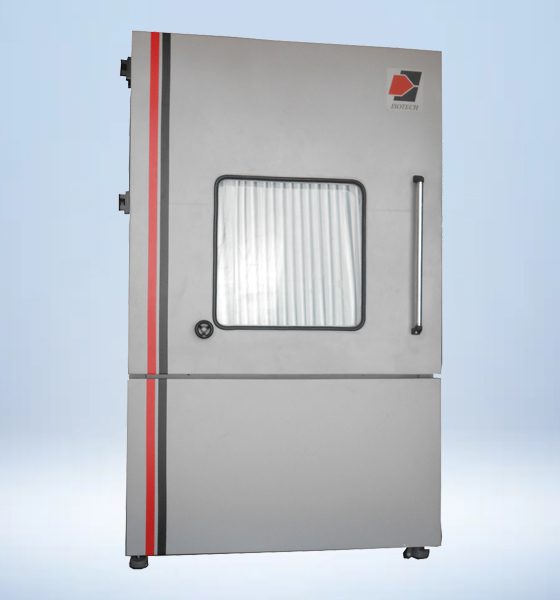
Chambers Construction
Interior structure made of air tight type. 16 Or 18 SWG 304 grade stainless Steel with adjustable / removable shelving. Outer external structure made of 16 Or 18 SWG CRCA /GI/ Stainless steel with electrostatic powder super fine coating finishing for a good appearance.
Insulation is environmentally friendly free of asbestos and CFC free mineral fiber insulation guarantees the best possible insulation values and hence, it will decrease the operating costs.
Door hinges fitted on the right hand side of the chamber with front opening single door. Double lined ‘A’ grade silicon gasket on door as well as chamber body so that like proof tightens the door for better performance with multi pan glass viewing window. Defogger heaters provided with an auto cut – off as well as suitable illumination provided to view the specimen under test.
Performance
Air circulation within the chamber with suitable capacity of fan motor and impeller for uniform distribution of temperature to maintain within desired limits. Only the impeller will be exposed in the conditioning plenum with drive motor from outside of the chamber. Condition plenum covered with a detachable type sheet for friendly maintenance of the chamber. The test chamber is mounted on a stable frame and equipped with vibration absorbers in order to avoid the transfer of vibrations from the fan section.
The fan constantly sucks the dusty air. A speed controlled drive-motor enabling continuous setting of air flow, with properly calibration method between air velocity and fan speed provided.

A suitable air duct to maintain linearity of air flow in the whole test space as per MIL Std Provided. Wind speed: In the centre of the test chamber Air born dust test: 1.5 m/ sec to 9m/ sec +/- 1.3m/s in time. This test facilities is available only in ITDUS models.
Quick responding jacket type air heaters are used for heating system to achieve the set value temperature. Highly uniform temperature distribution minimises variations in test results over multiple specimens. Air heaters are placed in such manner that, there is no direct heat radiation from the heaters on to the test specimen.
Instrumentation System
Programmable controller using large screen display. Instrumentation package features flexible. Other functions are included user friendly operation with TFT LCD touch screen as well as key input, graphical display of program patterns, testing history trend grapes. A no. of programs & profile segments with ramp & soak duration provided for cyclic operation. The controller is able to communicate with many different types of hardware using high speed RS 232/485 communications ports, networking and USB communications for fast downloads. Power failure recovery operation system.
Microprocessor PID non programmable controller for Temperature is available only in RE models.
P.T 100 sensor is measuring the temperature.

Safety Devices
Dust Chamber equipped with an emergency stop switch. High reliability and operator safety. Easy protection of chamber and specimen in case of failure. Chambers stop if the door is opening as operator safety. European style design signal tower.
Control circuit over current protection. Thermal fuse. Adjustable adequate safety cut – out against high and low temperatures. Chamber door limit switch. Every electrical functional circuit is equipped its own safety facility which shuts down the functional circuit affected or the entire test chamber in case of a malfunction.
Model Number
Cable Port holes are located on the left or on the right side of the test chamber and shall be used for inserting measurement and control cables, other supply connections or additional equipment with rubber plug.
Standard specification shelves and shelf are added as required.
Drain out let pipe with suitable fittings.
Electrical connection 415 / 220 V AC +/- 10%, 3 / 1 phase/N/PE 50 Hz. 230 V AC +/-10%, 1 phase
| Model No. | Temperature Range | Test space dimensions in liters |
|---|---|---|
| ITDU-80 RE | RT +5°C to + 80°C | 750 liters to 27000 liters |
| ITDU-60 RE | RT +5°C to +60°C | 750 liters to 27000 liters |
Note: LO = Logic programmable models. RE= Non programmable models. M= MIL Std.
Our Dust Chamber Samples

Dust Chamber
Isotech Technologies
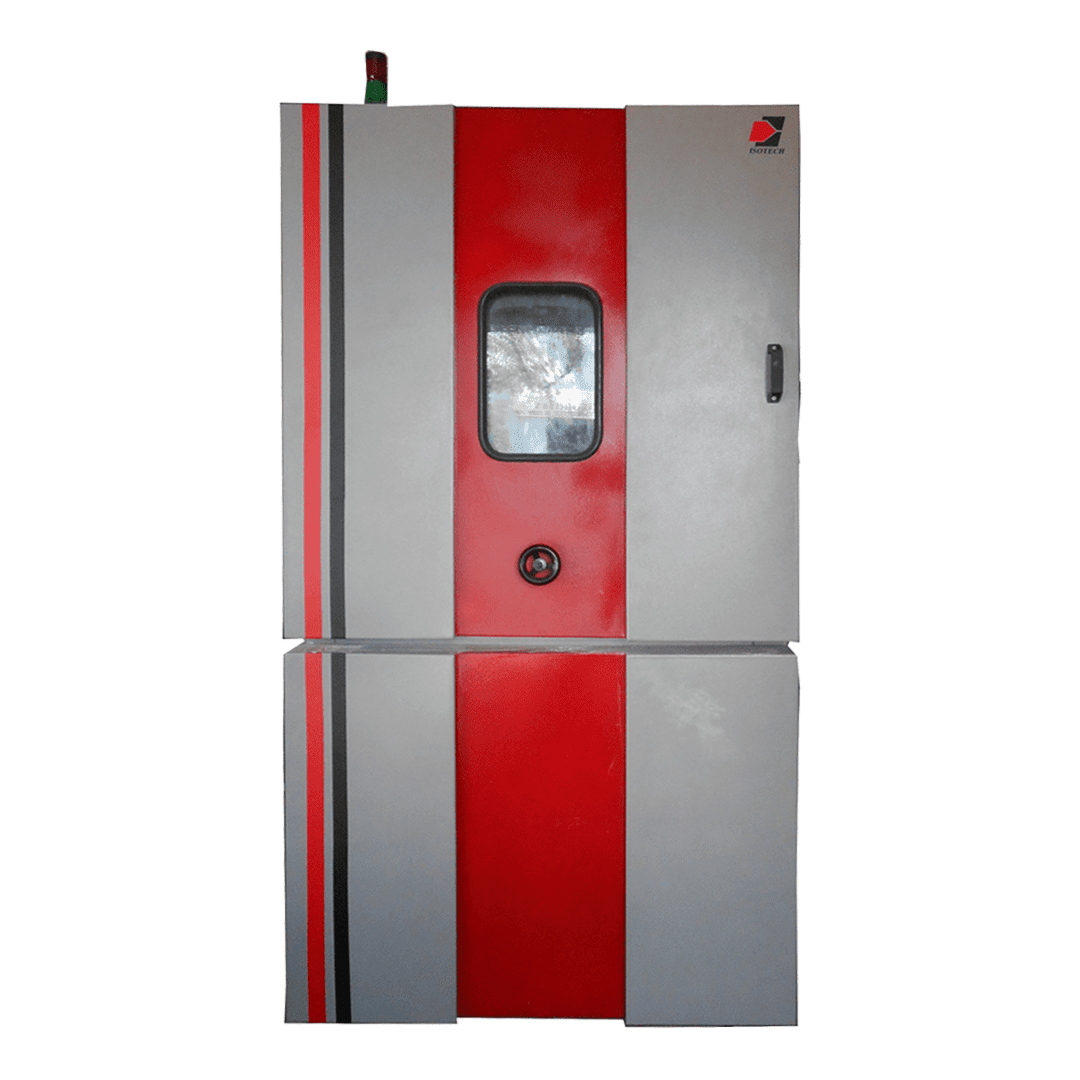
Dust Chamber
Isotech Technologies
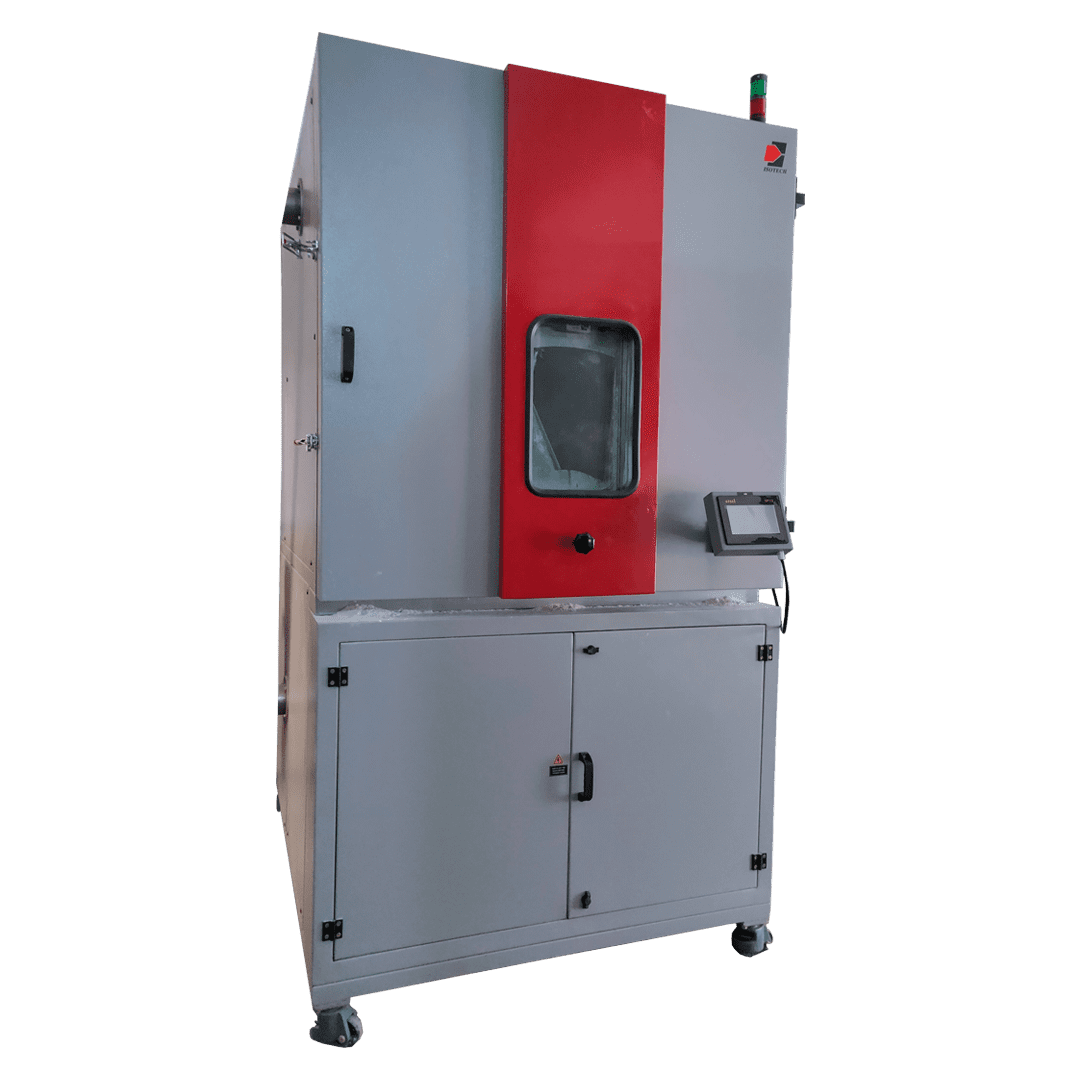
Dust Chamber
Isotech Technologies
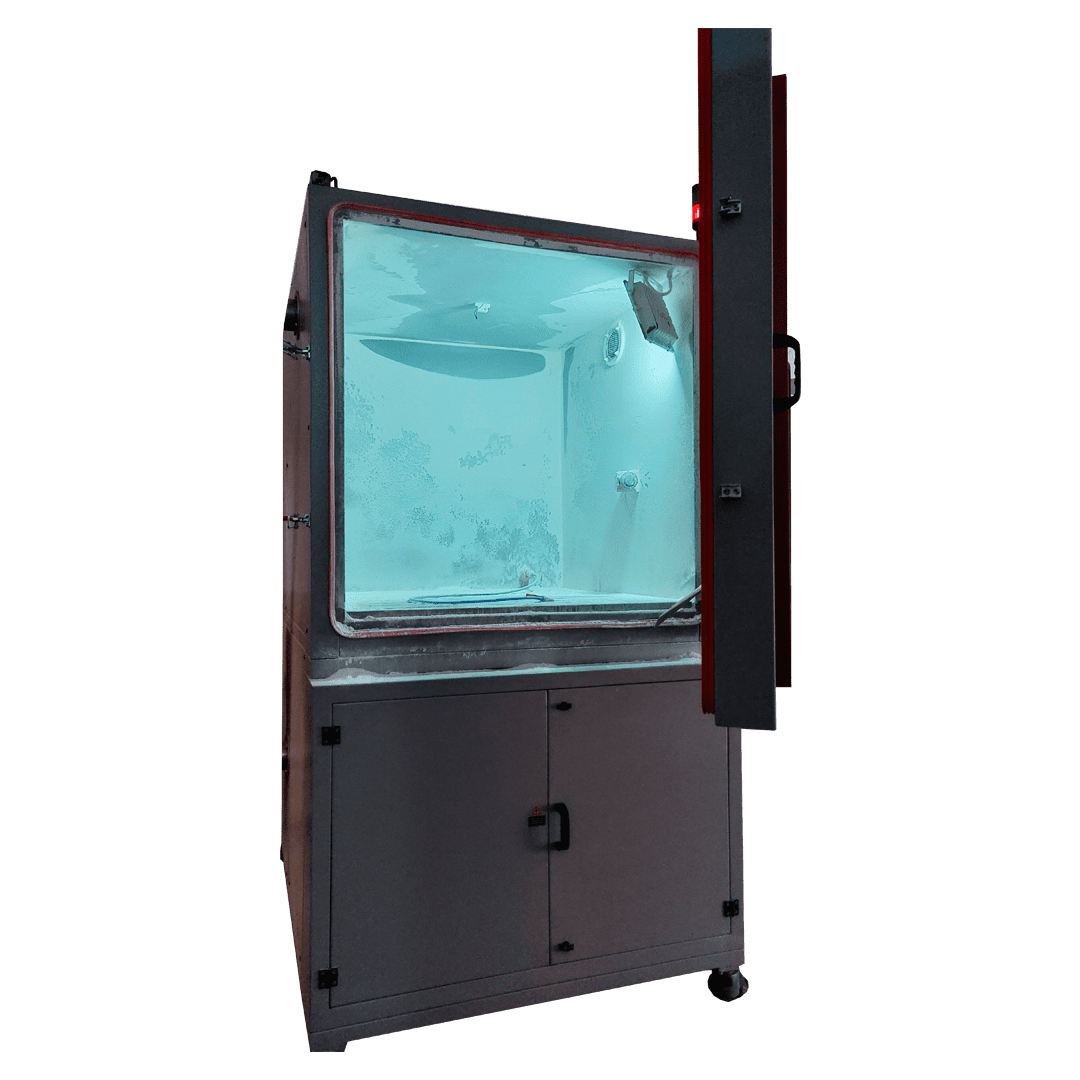
Dust Chamber
Isotech Technologies
Let’s Talk About your Requirements
Check with our team by submitting a simple form, Our team will get in touch with you soon..!
Call Us: (+91) 984-594-6739
ISOTECHPL
Frequently Asked Questions!
- Electronics: Computers, smartphones, tablets, TVs, circuit boards, etc.
- Automotive parts: Sensors, actuators, engine components, etc.
- Aerospace components: Aircraft engines, avionics, etc.
- Pharmaceutical products: Medical devices, implants, etc.
- Improved product quality: Dust chambers help companies to identify and address potential dust-related problems before they occur in the field. This leads to improved product quality and reliability.
- Reduced costs: Dust chambers can help companies to avoid costly recalls and warranty claims. They can also help to extend the life of products and reduce maintenance costs.
- Increased customer satisfaction: Dust chambers help companies to produce products that can withstand the rigors of real-world use. This leads to increased customer satisfaction and loyalty.
- Horizontal dust chambers : These chambers are typically used to test small to medium-sized products. They have a horizontal test chamber and a separate dust generator.
- Vertical dust chambers : These chambers are typically used to test large products or multiple products at the same time. They have a vertical test chamber and an integrated dust generator.
- The size and type of products to be tested
- The required dust concentration and distribution
- The desired temperature and humidity range
- The budget
- Load the products to be tested into the test chamber.
- Set the desired dust concentration, distribution, temperature, and humidity.
- Start the dust generator.
- Allow the dust chamber to run for the desired amount of time.
- Stop the dust generator and unload the products from the test chamber.
- Cleaning the dust chamber regularly.
- Replacing the dust filters regularly.
- Checking the calibration of the dust monitoring system regularly.
- Clogged dust filters: This can restrict the airflow and reduce the dust concentration.
- Improper calibration of the dust monitoring system: This can lead to inaccurate readings of the dust concentration.
- Leaks in the test chamber: This can allow dust to escape or contaminate the test environment.
- Check the dust filters to make sure they are not clogged.
- Calibrate the dust monitoring system according to the manufacturer’s instructions.
- Inspect the test chamber for leaks.
- Contact the manufacturer of your dust chamber for assistance.

